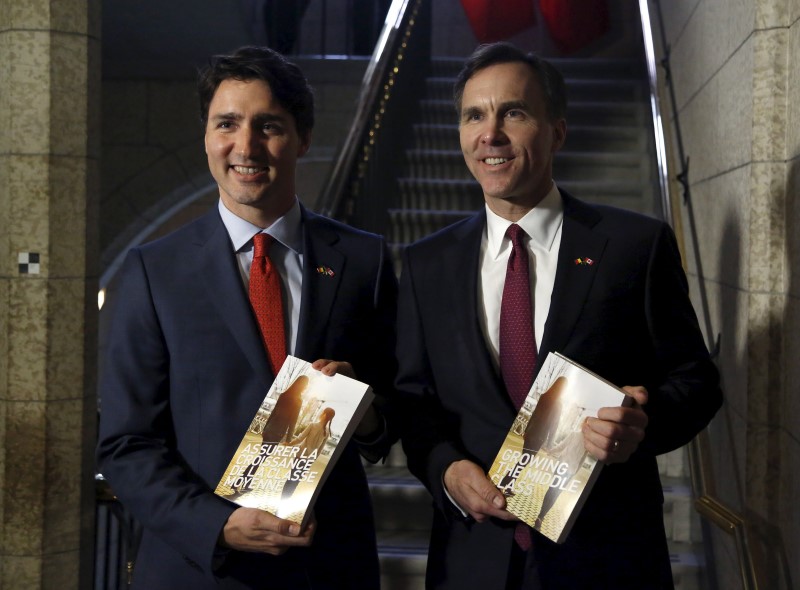By Leah Schnurr
OTTAWA (Reuters) - Canada's new Liberal government on Tuesday unveiled a stimulus budget to revive growth with infrastructure spending and said it would run a deficit nearly three times larger than promised during last year's election.
The government said the budget was expected to raise growth 0.5 percent in the first year and 1.0 percent by the second after the party of Prime Minister Justin Trudeau warned last month an oil price plunge had weakened Canada's economic and fiscal outlook.
The government projected a C$29.4 billion ($22.5 billion) deficit for fiscal 2016-17, higher than the C$28.6 billion forecast in a Reuters survey, and gave no target date for returning to a balanced budget.
Economists said the stimulus package lowered chances the Bank of Canada will need to cut interest rates again in April.
Trudeau has pledged to break with Group of Seven peers by countering slow growth with fiscal stimulus rather than austerity. Finance Minister Bill Morneau said the government would spend C$3.97 billion on infrastructure projects in the coming fiscal year, ramping that up to C$7.32 billion the following year.
Infrastructure spending, a major plank of the Liberal campaign, will include upgrading public transit.
"We are seizing the opportunity to invest in people and the economy, and to prepare Canada for a brighter future," Morneau said in his budget speech.
But Rona Ambrose, interim leader of the official opposition Conservative Party, said from a taxpayer's point of view the budget was "a nightmare scenario" given the lack of specifics on returning to balanced accounts.
The Canadian dollar was little changed immediately after the budget's release. [CAD/]
The budget, as expected, broke several pledges the Liberals made before the election, including running just three years of deficits of up to C$10 billion before balancing the books by fiscal 2019-20.
Because the Liberals command a majority in the Canadian Parliament's House of Commons, the budget is guaranteed to pass.
The budget forecast the deficit would decrease slightly to C$29.0 billion in 2017-18. But there was no specific forecast for a return to a balanced budget, with the budget still expected to show a deficit of C$14.3 billion in 2020-21.
There was also a C$6 billion adjustment for risk included in each year's deficit figures.
The finance minister told reporters that if the stimulus generated growth at the top range of forecasts, the Liberals should be able to balance the books in five years.
"There is a pretty good chance if the economy performs as expected that the deficit numbers could actually track lower through the forecast horizon," said Robert Kavcic, economist at BMO Capital Markets.
The government said it would set a timeline for balancing the budget when growth was forecast to remain on a sustainably higher track.
"I'd like to have seen a zero in there at some point but there's mention of it, so it's a step in the right direction," said Craig Wright, chief economist at Royal Bank of Canada.
The budget forecast federal debt as a percent of gross domestic product would rise to 32.5 percent in the coming fiscal year from this year's 31.2 percent. It will not get below its 2015-16 level until it hits 30.9 percent in 2020-21.

Markets widely expect the Bank of Canada to stay on hold at its April meeting, when the bank will incorporate the budget into its economic forecasts. The bank cut rates twice last year.